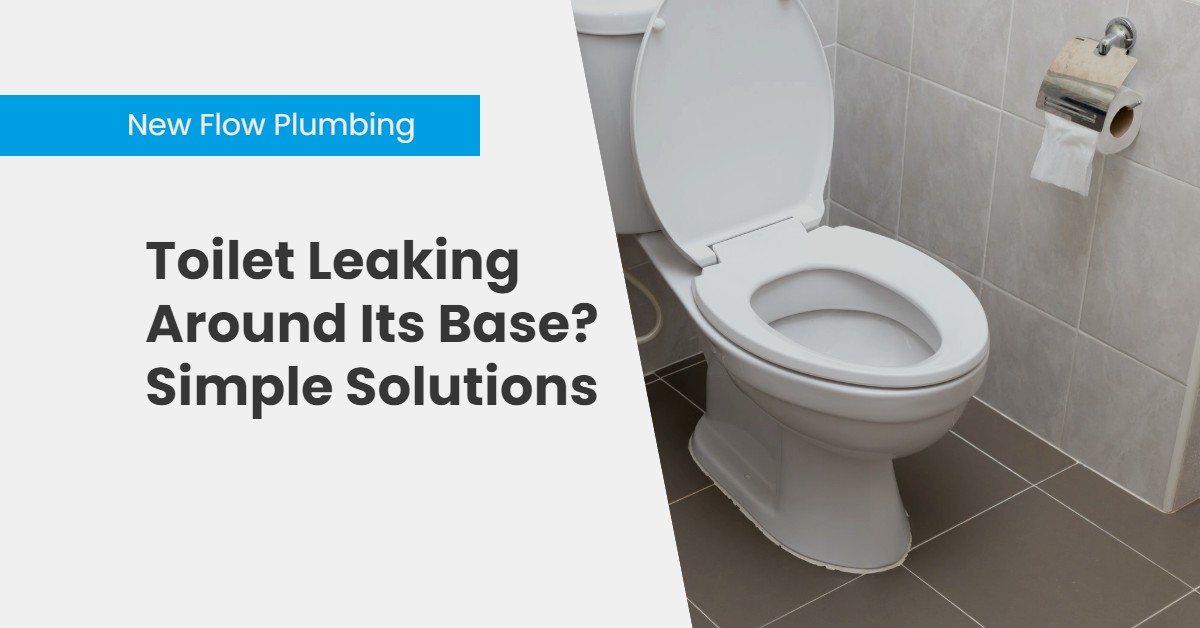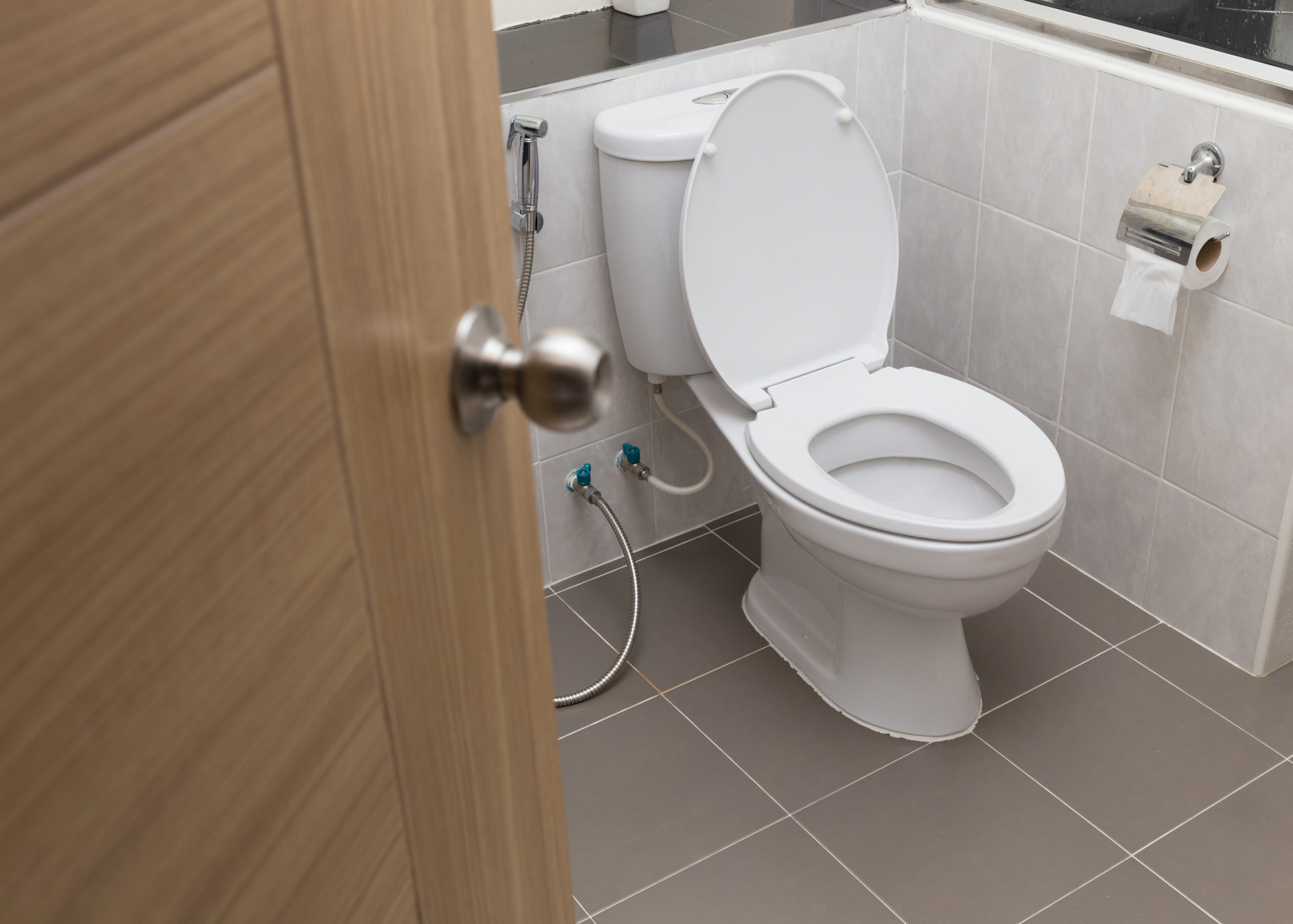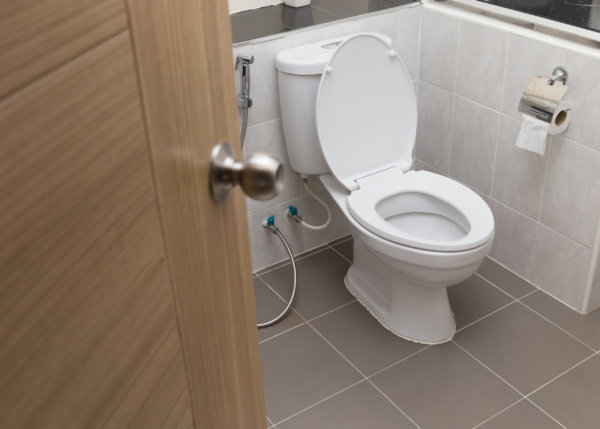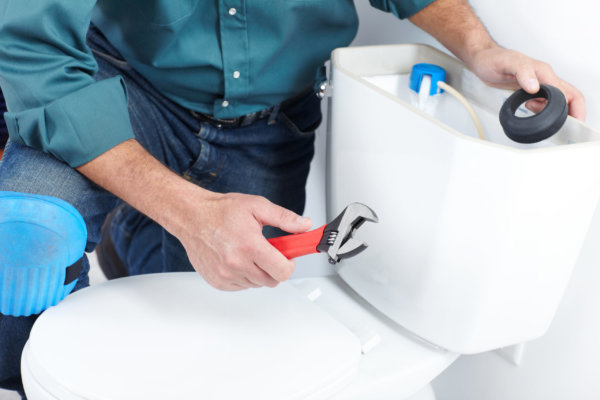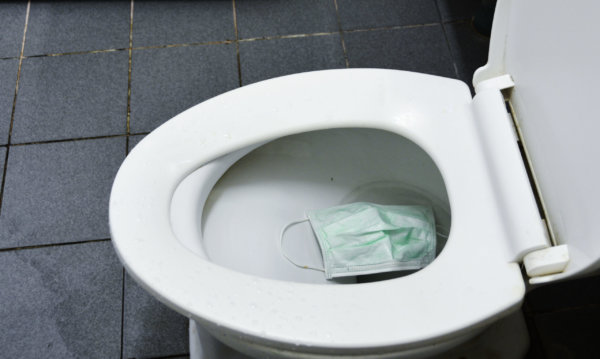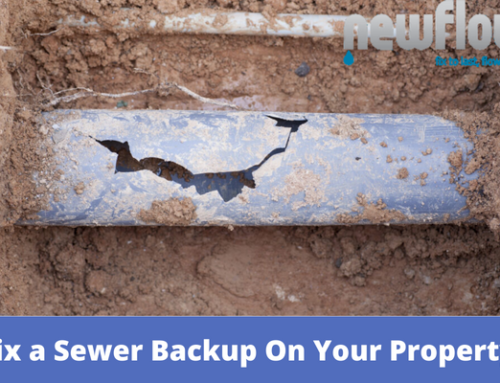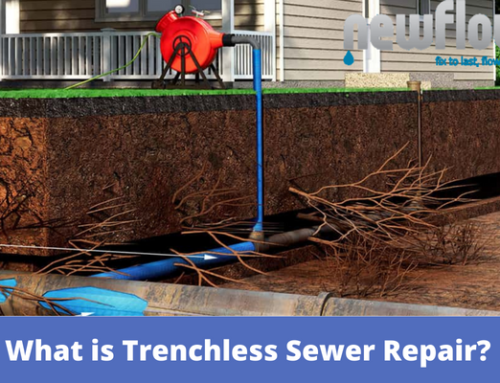Toilet Leaking Around Its Base? Simple Solutions
Is your toilet leaking around its base? Are you spotting water on your bathroom floor with no clue how it got there? Follow along! This article is going to give you simple solutions for repairing that leaking toilet. Some of these solutions require a little bit of explanation but don’t worry. We break down everything to make it simple just for you.
Why Your Toilet Is Leaking Around Its Base
Let’s go over a few reasons why your toilet is leaking around its base.
Tee Bolts Need To Be Tightened – At the bottom of your toilet, two bolts keep the toilet to the ground. If these bolts are loose or broken, it could cause the toilet to rock and loosen the wax ring seal. If you notice a lot of water every time you flush, chances are the tee bolts are loose.
Wax Ring Is Bad – The wax ring is the seal between your toilet and the drain pipe. It keeps everything nice and tight, but it can wear down over time. If it’s loose or cracked, you’ll notice water leaking.
Loose Water Supply Line – Check the water supply that connects to your toilet tank and see if it’s loose or cracked. Make sure the nut and rubber seal are tight; otherwise, you will notice water leaking all the time.
Water Condensation – Water in a toilet tank and bowl is cold, and so is the porcelain or other material your toilet is made of. A humid room causes water to drip down the porcelain bowl and appear as a leak. Lucky for you, it’s just the temperature in the room.
Tank Lid – Take off the tank lid and check to see if any leaks are coming from inside there. Look for cracks or if the water is getting too high.
How To Disconnect And Remove The Toilet
Shut off the water to your toilet before disconnecting it. The shutoff valve is usually located on the left side of the toilet near the water supply tube and the water valve tailpiece.
- Flush your toilet to drain all the water from your toilet and the tank. Use a sponge or cloth to get rid of excess water in the toilet tank and bowl.
- Next, use a screwdriver to unscrew the nut that mounts the supply tube to the fill valve tailpiece.
- Use a wrench to remove the nuts from the tee bolts at the base of the toilet. If the tee bolts are rusted and won’t turn, you may need to use a hacksaw to sever each bolt.
- Remove the toilet by lifting it up and away from the floor drain. You may need help with this.
- Set the toilet on its side on a towel to prevent damage.
How To Fix The Leak
If you don’t feel comfortable doing any of these solutions yourself, it’s okay to call a professional.
Tighten The Tee Bolts – Remove the plastic covers from the base of your toilet on both sides. Use an adjustable wrench to tighten the bolts until you feel the toilet sealing back to the floor. If the tee bolts are already tightened and still leaking, you will want to remove the toilet.
Replace The Wax Ring – Once you’ve removed the toilet, as explained above, you can fix the wax ring. Your local utility store or online store has wax rings you can purchase. Scrape away the old wax around the drain with a knife, making sure to remove everything. Place the new ring with the plastic cone facing down toward the drain. Ensure that the tee bolts are positioned correctly in the key openings on each side of the flange.
Tighten The Water Supply Line – Use a wrench to tighten the nut or replace faulty seals or bolts. Make sure to turn off the water before you attempt to replace anything with the water supply.
Condensation – If you notice the water is simply coming from condensation, there are few simple steps you can take:
- Install a tray around your toilet to collect dripping water.
- Insulate your water tank.
- Make sure the flapper in your tank isn’t faulty.
- Take shorter, cooler showers to avoid water condensation.
Tank Lid – If the problem is just the tank lid having cracks or broken pieces, all of these can be fixed relatively simply. Make sure to check the:
- Fill tube
- Chain
- Handle
- Float
- Flapper
Remember, if you can’t do any of these things yourself, don’t be afraid to call for help.
How To Prevent Further Leaks
Below are some things you should never flush down your toilet.
If These Solutions Don’t Work
If the problem extends past your toilet and has to do with your sewage pipes, what can you do? Well, the answer is easy! Trenchless sewer repair.
Pipe Lining (Trenchless Sewer Line Repair)
A unique, epoxy-impregnated liner is inserted into the old pipe and inflated. This creates a new pipe inside the old one. Pipe lining can be considered replacement or repair depending on whether the whole pipe length will be lined or just a section.
If only a section of pipe (a spot repair) is lined, it is considered a repair. If you line the whole pipe from start to finish, it is like getting a brand new pipe installed (aka replacement).
Pipe Bursting (Trenchless Sewer Line Repair)
Pipe bursting is where a new HDPE (high-density polyethylene) pipe is attached to a winch with a cone-shaped bursting head and pulled through the damaged line. The damaged pipe breaks apart as the new one takes its place.
Note: Sometimes, a drain pipe is so severely damaged that no trenchless method is viable. Plumbers cannot use trenchless technology on pipes that are back-pitched, which means that the original contractors failed to use the proper slope for your sewer line to your city connection. Also, if the pipe has collapsed onto itself, you will have to go the conventional trenching route.
Who Can Help Fix That Leak!
It’s time that New Flow Plumbing comes in to save the day. We’ll get you started with a CCTV sewer camera inspection to determine where your problems come from. Then, we give you a free repair estimate, followed by available repair options. Whatever the issue, New Flow Plumbing will have your plumbing running perfectly again.

